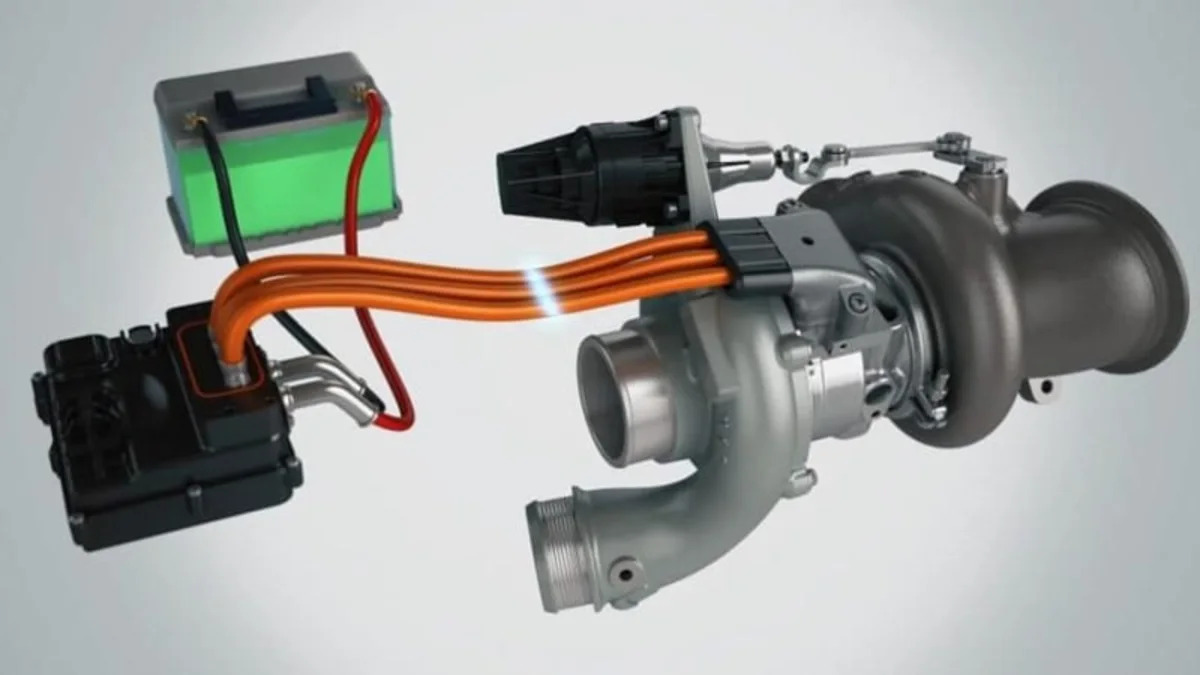Garrett Motion, the well-known purveyor of turbochargers since 1950, has gone public with its E-Turbo, the evolution of the electronically assisted turbo. As Forbes explains, the unit puts an electric motor on the shaft between the turbine wheel and the compressor, which is different from how electronically boosted turbocharging systems in vehicles from Mercedes-Benz and the Volkswagen Group work. Garrett engineers told a conference that when compared to a standard, modern Garrett turbo, they've seen up to a 16% increase in rated power, and a 10.5% increase in rated torque. The engine achieved target torque in one second instead of 1.5 seconds when starting at 1,500 rpm, and accelerated the vehicle from 37 miles per hour to 62 miles per hour in 8.8 seconds instead of 11 seconds. Those engineers didn't explain what kind of car or engine the turbo was tested on, however.
Competitors like BorgWarner and Valeo cite a similar overall performance increase as Garrett, that being a maximum fuel efficiency boost of about 10%. Garrett says the average will be around 2-4%.
The e-turbo systems Mercedes and Audi use are more like electric superchargers than turbochargers, supplying extra air during low-rpm driving by spinning a compressor up to 70,000 rpm in as little as 250 milliseconds. The electric assist fills out low-end power while either the standard-sized exhaust-driven turbos on a car like the diesel-powered Audi RS5 or the Mercedes CLS 53, the twin turbos on the Audi SQ7, or the first of a pair of sequential turbos, spool up to take over the load. These are separate components in the engine bay — BorgWarner says its system is about the size of a cantaloupe — run off a 48-volt system.
Garrett claims several advantages by placing the e-motor on the shaft inside an exhaust-driven turbo. As with the other e-boost systems, the electric motor spins the compressor until exhaust gases catch up and begin powering the turbine; having a single unit keeps the turbocharger plumbing simpler. Perhaps the strongest benefit is that the turbo can harvest energy when coming off boost, as the still-spinning turbine turns into a generator resupplying the battery.
Garrett won't say which automaker gets the performance add-on first, but the initial use case will be a high performance automobile in 2021. After that, the company says it has 10 active development programs on the go in various segments in the world's three largest car markets.


Sign in to post
Please sign in to leave a comment.
Continue